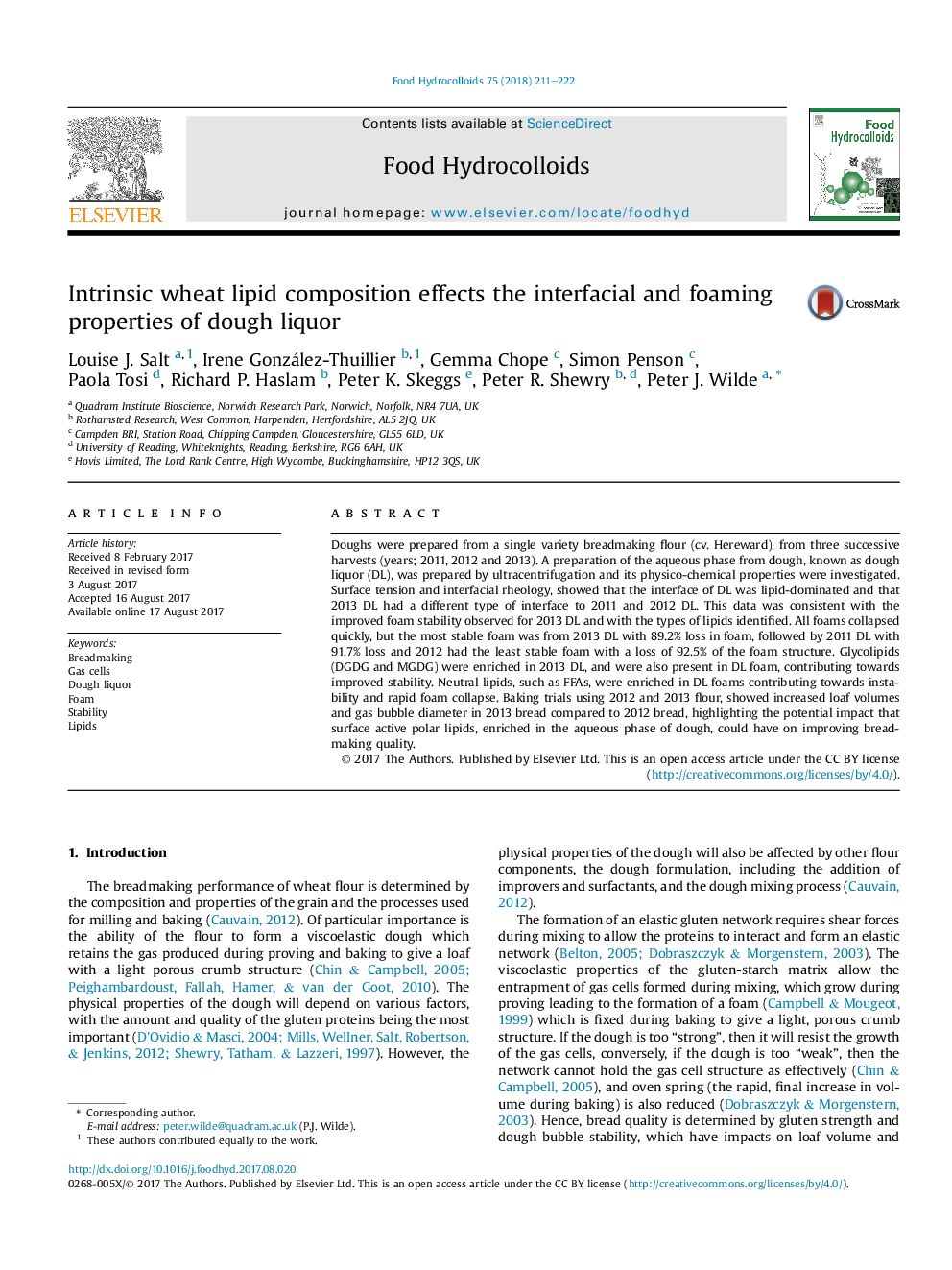| کد مقاله | کد نشریه | سال انتشار | مقاله انگلیسی | نسخه تمام متن |
|---|---|---|---|---|
| 4983660 | 1454402 | 2018 | 12 صفحه PDF | دانلود رایگان |
- During proving, gas bubble stability is determined by the types of lipids adsorbed at the air-water interface of the aqueous phase.
- Both proteins and lipids were active at the air-water interface of dough liquor (DL), but it was dominated by lipids.
- FFAs were enriched in DL foams and were detrimental to foam stability, whilst Polar lipids were enriched in DL.
- Greatest loaf volumes were generated from flour that produced DL with the highest enrichment of polar lipids.
Doughs were prepared from a single variety breadmaking flour (cv. Hereward), from three successive harvests (years; 2011, 2012 and 2013). A preparation of the aqueous phase from dough, known as dough liquor (DL), was prepared by ultracentrifugation and its physico-chemical properties were investigated. Surface tension and interfacial rheology, showed that the interface of DL was lipid-dominated and that 2013 DL had a different type of interface to 2011 and 2012 DL. This data was consistent with the improved foam stability observed for 2013 DL and with the types of lipids identified. All foams collapsed quickly, but the most stable foam was from 2013 DL with 89.2% loss in foam, followed by 2011 DL with 91.7% loss and 2012 had the least stable foam with a loss of 92.5% of the foam structure. Glycolipids (DGDG and MGDG) were enriched in 2013 DL, and were also present in DL foam, contributing towards improved stability. Neutral lipids, such as FFAs, were enriched in DL foams contributing towards instability and rapid foam collapse. Baking trials using 2012 and 2013 flour, showed increased loaf volumes and gas bubble diameter in 2013 bread compared to 2012 bread, highlighting the potential impact that surface active polar lipids, enriched in the aqueous phase of dough, could have on improving breadmaking quality.
210
Journal: Food Hydrocolloids - Volume 75, February 2018, Pages 211-222
